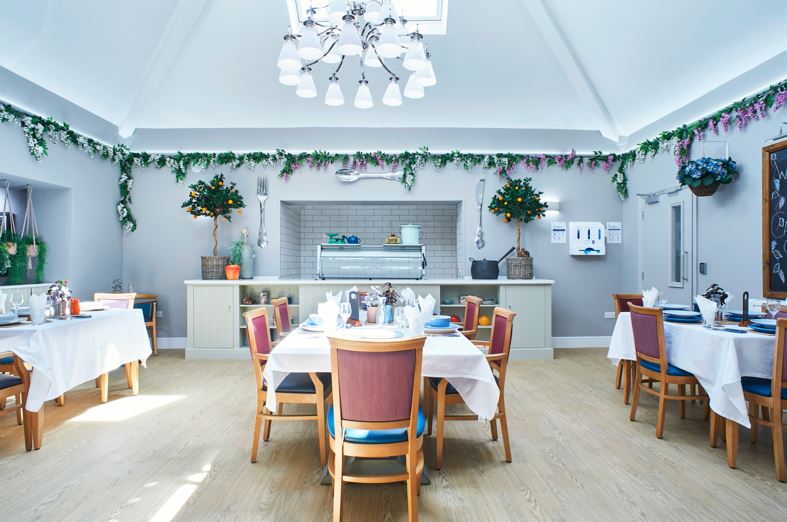
In this feature we explore how smart lighting solutions are helping to support people living with dementia
Every element of the built environment – from layout and room adjacencies to interior design and product choice – needs to be considered when creating dementia friendly spaces. And particularly crucial is lighting, as standardised artificial lighting can be problematic to the ageing eye, especially among people with dementia, who can have a variety of visual difficulties.
“Lighting levels and contrast levels between rooms and spaces are particularly important considerations in care environments for older adults,” explains Neil MacDonald, director of lighting manufacturer, Circadacare.
Day or night
“It is estimated that for the same light level, a typical 60-year-old receives about one third of the retinal illuminance of a 20-year-old, so effective lighting must take into consideration the requirements of older adults, as well as individual differences.”
In addition, for people with dementia, the link to day and night – or circadian entrainment – is further challenged by the disease itself. MacDonald said: “Light is the most important trigger for our natural human circadian cycles. “Put simply, the sun rising in the morning lets us know it’s approaching time to get out of bed, and the sun setting in the evening means it’s time to think about heading off to sleep. “Not having proper lighting in a care home may, therefore, affect residents in several ways and they may have problems maintaining their circadian cycle. This can result in feeling drowsy, further impaired mobility, and other sensory issues.” Torben Skov Hansen, chief technology officer at Chromaviso, experts in health-promoting lighting solutions, added: “People with dementia are even more dependent on proper lighting because they tend to stay indoors more than the average person. “But this weakens the connection too day and night, so it is imperative that lighting is considered to make the built environment a pleasant space as well as a healthy space.” This growing evidence base has led to a change in direction for lighting manufacturers, with specialist circadian lighting solutions now commonplace in dementia care facilities.
Smart solutions
Paul Davison, technical consultant at Ansell Lighting, said: “The development of smart lighting – from individual bulbs and fittings to complete solutions – presents huge benefits to health and care settings.
“A great example of how smart lighting can aid people living with dementia is the use of Correlated Colour Temperature (CCT) products. “Warm white light – under 3300 Kelvins – which is often used in care settings - is good for relaxing and aiding sleep. But, to provide visual clarity and promote alertness, a cooler white light of 6000 Kelvins and above is required to more accurately replicate daylight – which is what people living with dementia need. “Smart lighting also enables the adjustment of colour temperatures to suit requirements, so the same room can be both restful and visually stimulating, reflecting the natural circadian rhythm.”
The perfect balance
Skov Hansen adds: “Our products are designed through collaboration with hospitals and nursing homes and many loops of feedback and adjustments to find the perfect balance between being health promoting and pleasing at the same time.
“The principal thing to understand is that lighting must establish the crucial link to nature. “Having provided the ability to see and navigate is just to solve the simple part of the need for lighting. It must also make it possible for people staying indoors to stay connected with the day and night cycle. “For the first part of the day, we must be willing to provide more light than dictated by standards and still keep it a pleasant space. “Then, during the evening and night, we must provide light that does not keep the elderly awake. “Especially at night, traditional lighting is proven to have detrimental effects on sleep and force unnecessary and unhealthy wakefulness for all building occupants. “That can be made so much better by providing a type of lighting that supports the recent recommendations from leading scientists.” And Circadacare’s products are designed to calibrate the colour spectrum and intensity of light to allow circadian-supportive lighting to work 24 hours a day.
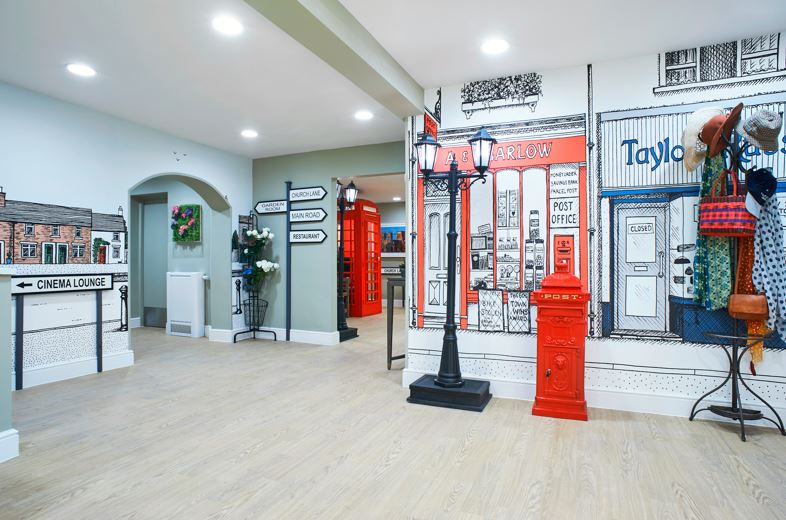
Let there be light
MacDonald said: “Each of our lights includes specially-selected multiple colour LEDs, which allow a high level of circadian stimulus to be delivered as well as the capability to manage the colour mix to avoid circadian disruption in the all-important afternoon, evening, and night times.
“In addition, advanced software algorithms manage the lighting ‘recipe’ continuously on a daily cycle to provide optimum support for human circadian rhythms. “And our lights are designed to be capable of providing a higher level of illumination in a room than standard lighting to help with visual acuity in older adults.”
This new generation of smart lighting products is enabling designers and architects to alter lighting levels in different areas.
“The overall consideration is for good levels of both photopic and melanopic lux in every space or room,” said MacDonald. “Photopic lux is the light we see by, and standard lighting designs will normally solely focus on that. “Melanopic lux is the light which affects our body clocks and acts as an influencer on our circadian cycles. “Lighting that can deliver both, and is received by the person both directly and indirectly, will be the best approach.”
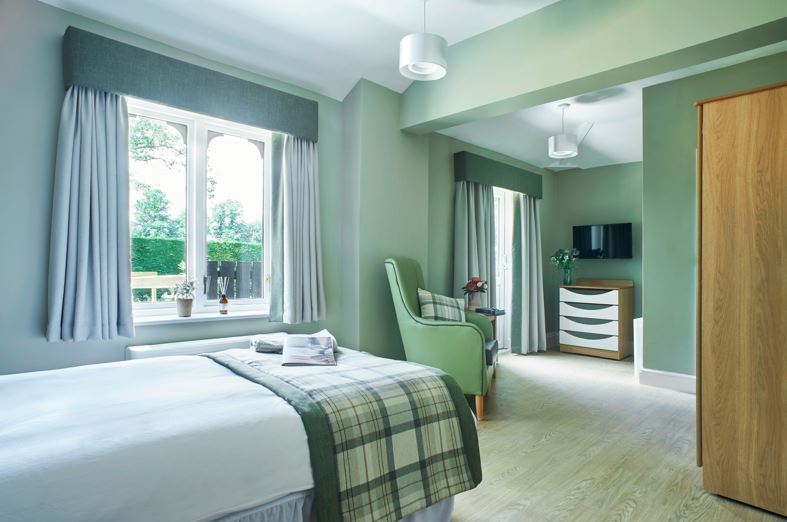
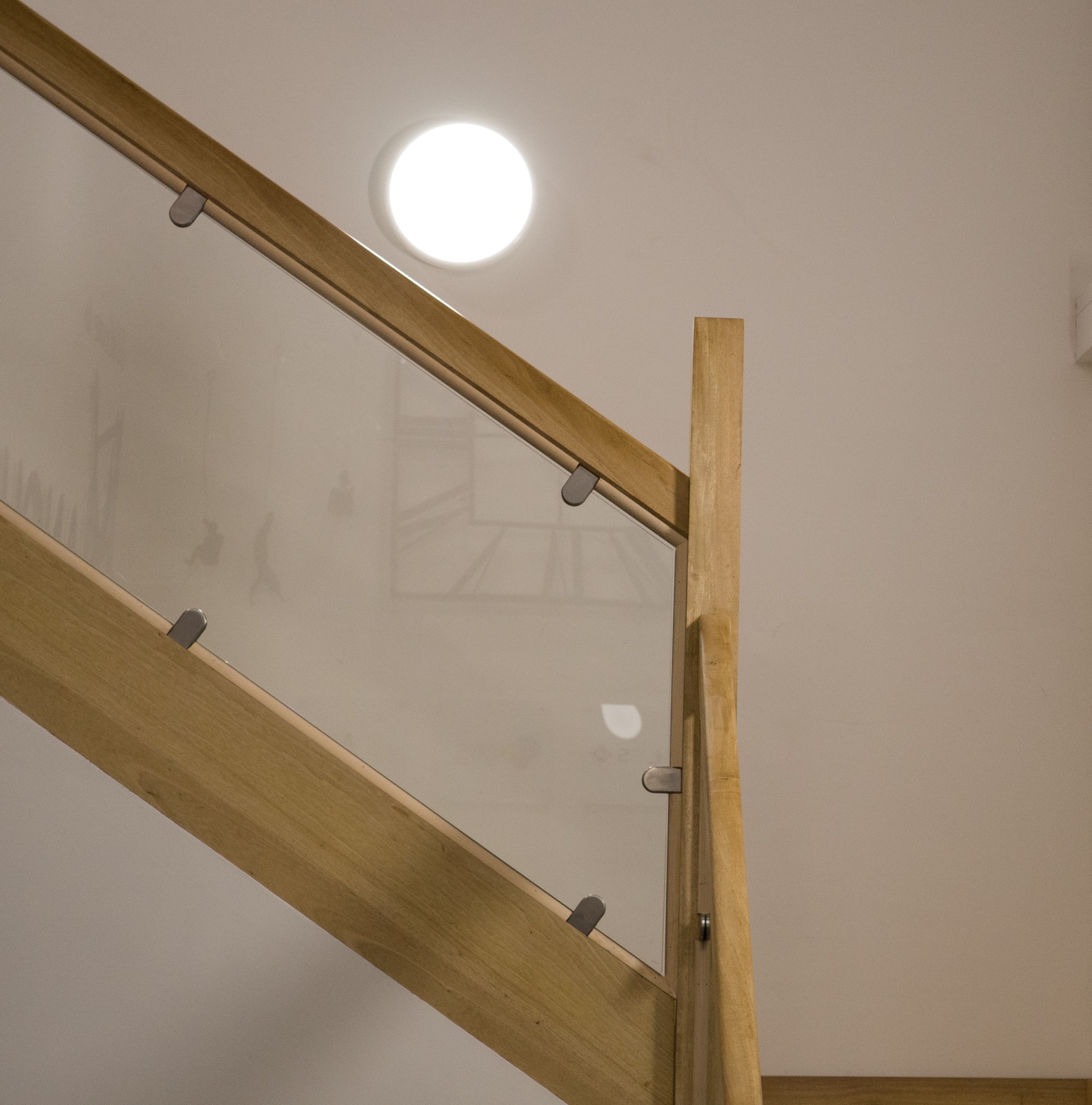
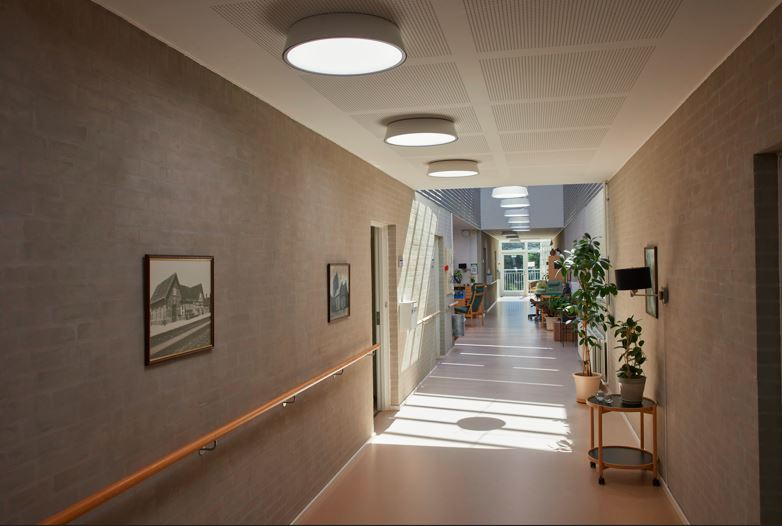
The right choice
In bedrooms lights should be capable of delivering circadian stimulus through colour and brightness settings and be able to provide enough light in the evenings and at night without any potential disruption to a person’s circadian cycle. “Bedrooms and sleeping areas should be capable of being dark at night with carefully-calibrated night-time lights or settings where light may be needed,” said MacDonald. Being a functional space, bathrooms should have brighter lights than other rooms, but also provide a good night-time light level and setting which does not disrupt circadian cycles.
The use of sensors to activate the lights is also an effective way to minimise energy use. “People with dementia may find it difficult to eat without proper lighting arrangements,” MacDonald warns. “It is important, therefore, to ensure all dining areas are equipped with bright lights. “A good even and wide level of illumination is important, so ceiling and wall lights are particularly effective in dining areas and lounges. “Uplighters are also effective at providing indirect light and helping to avoid shadows and creating bright or dark areas within a room.” He adds that corridors and circulation areas must be lit to support safe movement, so require sufficient levels of lighting with a good even spread onto floor and walls.
Again, though, care must be taken to ensure there are no shadows or dark areas and that contrast levels and differences between adjacent spaces are eliminated. Davison advises selecting products which can reduce glare, telling hdm: “Lighting design for a care setting is definitely not a one-size-fits-all solution, as each application needs to be considered on an individual basis, taking account of the specific requirements and all possible scenarios, all of which is achievable using smart lighting.”
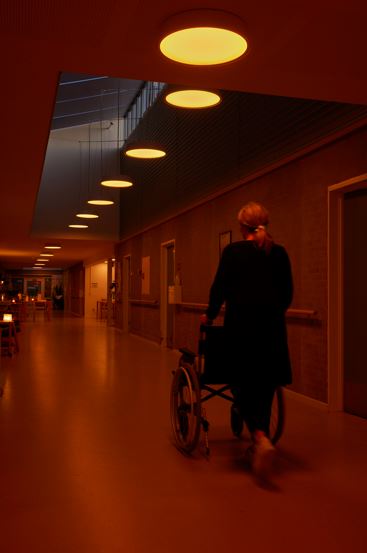
User friendly
In the future, all three companies are expecting their lighting solutions to continue to evolve and become even smarter. Skov Hansen said: “We believe there is still some work to be done to establish and document feasible solutions that will connect health and care occupants to the rhythm of day and night.
“At Chromaviso we will focus on making the lit space more pleasant and personalised, yet still healthy. “For now, the lighting system is an advanced form of lighting, and the future will make it easier for customers to establish and use these systems, where the complexity is hidden behind robust automations and helpful user interfaces. “To us it is apparent that healthy lighting comes from a system with some degree of automation and our future developments will focus on making that system robustly and seamlessly linked to buildings in one hand and users in the other.” MacDonald adds: “There is a fair body of scientific evidence that suggests sleep and circadian disruption aid the onset and progression of Alzheimer’s and if that can be addressed with improved circadian-supportive lighting at home, then that is a very worthwhile objective.
“We also believe that as awareness and understanding grows, more lighting options will become available for both care environments and to support people living independently in their own homes for longer.
“Someday, all lighting solutions will be sensitive to, and supportive of, our natural body clocks.”